In late August on a blowy afternoon of westerlies gusting to 25 knots, I set out in a small outboard skiff to run from an island retreat, across East Penobscot Bay and down Eggemoggin Reach—a trip of some 15 miles. As I departed the island, conditions appeared lumpy but manageable, but about a mile out it got unpleasant, with a nasty standing chop kicked up by opposing wind and tide. I knew I really had no business out there in a lightly built 16' skiff vulnerable to being blown about in the gusts and smacked hard by the confused seas.In spite of her light weight and moderate power (20 hp), my strip-planked Jericho Bay Lobster Skiff, PINK SLIP, handled the snotty conditions like the little lobsterboat that she is. Her straight keel prevented her from slewing in the seas, her fine entry kept her from pounding badly, and her flared bow sections knocked down the worst of the spray and had the reserve buoyancy to resist burying in the steep chop. I can’t say the trip was comfortable, but by throttling back and trim- ming my load slightly forward—weight redistribution is essential in coaxing the best out of any small boat— the skiff ran reliably and responsively in semi-displacement mode at 13 knots. I relaxed more as her seakeeping abilities became clearer, punching her into waves at higher speeds than I had initially dared. The boat continued to track well, responded promptly to the helm, and resisted bow steering, even coming down the wave backs. Boaters with better sense had already quit the Reach as I made my way down to Brooklin, feeling a bit foolish for being out in those conditions and lucky at my choice of boat. By the time I reached my mooring I had shipped only a few bailing scoops’ worth of spray.This is a forgiving boat.
Join The Conversation
We welcome your comments about this article. To include a photo with your remarks, click Choose File below the Comment box.

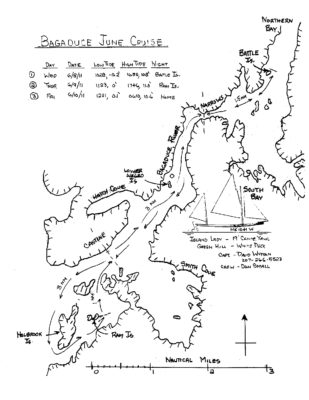


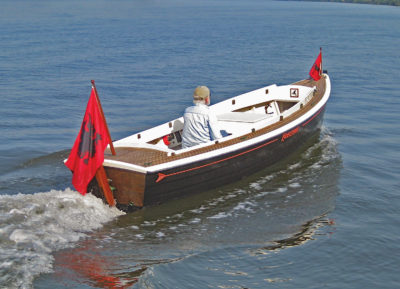
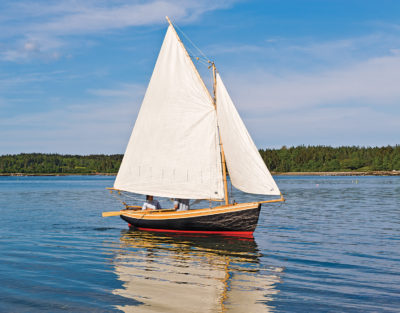
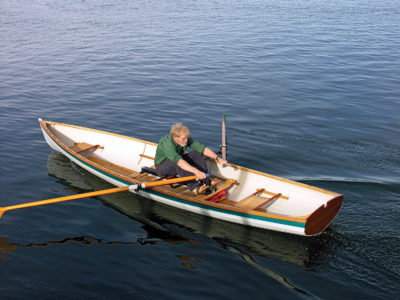
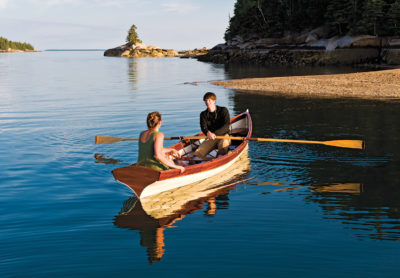
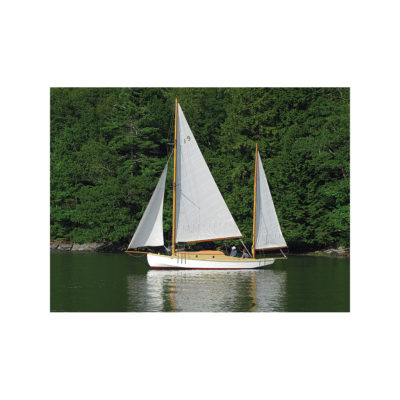
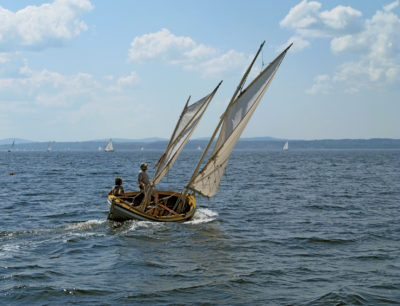
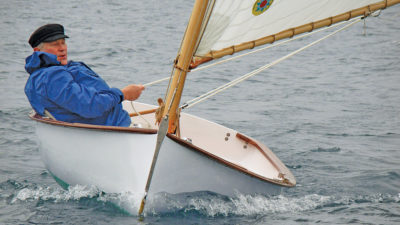
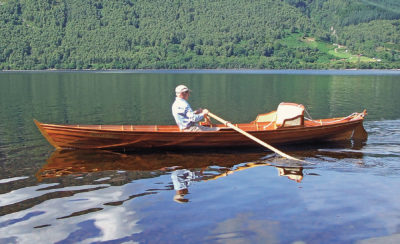
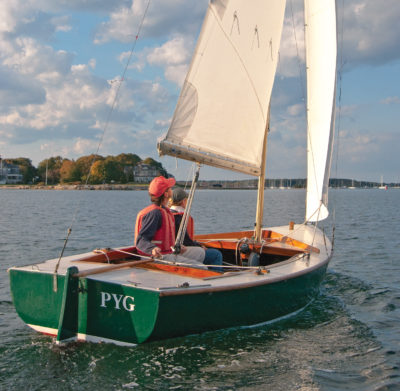
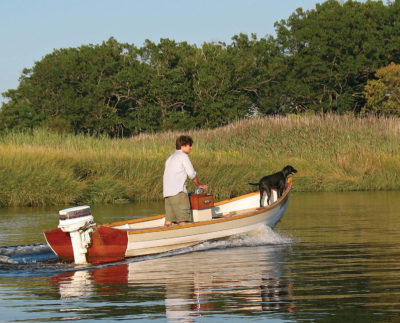

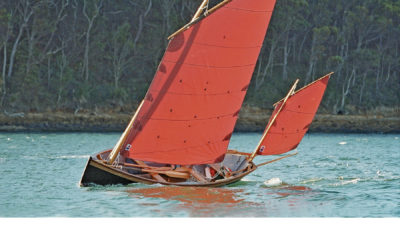
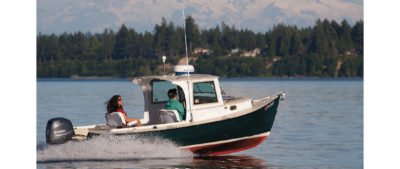
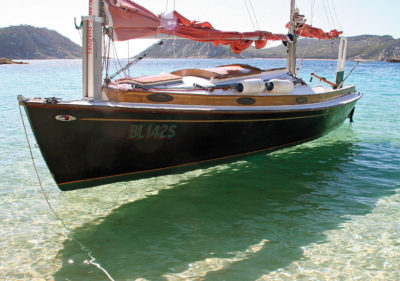
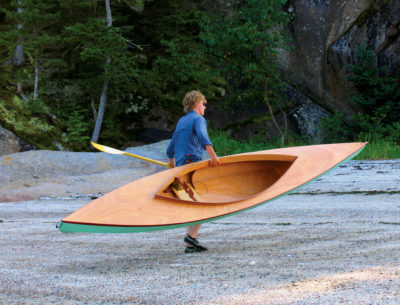
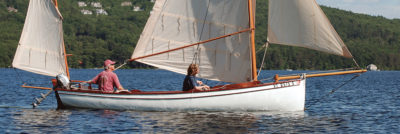
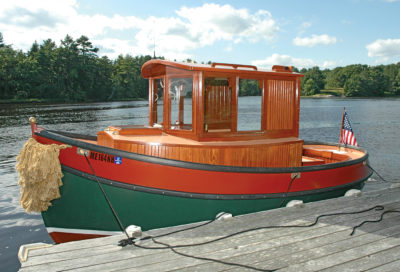
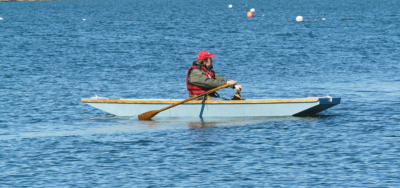
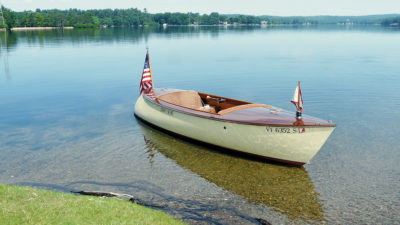
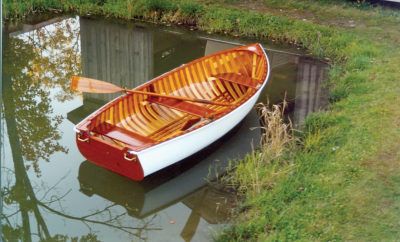
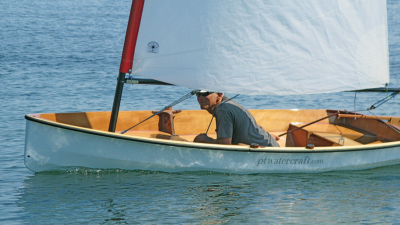
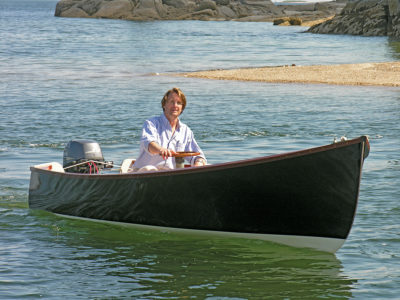

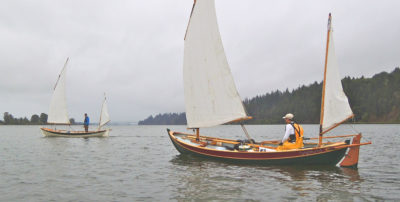
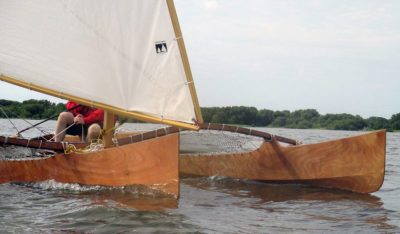

Billy Atkin designed many boats intended for moderate speed (17 to 12 knots) and horsepower with the hook in the keel. Most of these, if not all, were for inboard power. Oddly enough, he never remarked on this design feature.
I believe it was Weston Farmer who used a similar principle in a 19′ lapstrake outboard he named TRUMPET. He specified 40 hp for propulsion. He referred to the hook in the keel as “empenage,” (a French engineering term, he said). The design appeared in one of the boat building magazines of the time, Sports Afield Boatbuilding Annual if memory serves.
The hook in the bottom is all well and good until your motor breaks down and you have to row home.
The hook creates drag, and makes rowing a chore.
I think a trim tab would serve the same purpose, and a hull without the hook to the bottom would get better fuel economy too.
Not so sure. A properly designed hook by someone like Joel White would improve fuel economy at planing speeds. As to rowing, the submerged planing transom rather than the subtle hook would make for drag. At slow speeds like that, the difference with or without the hook would be faint.